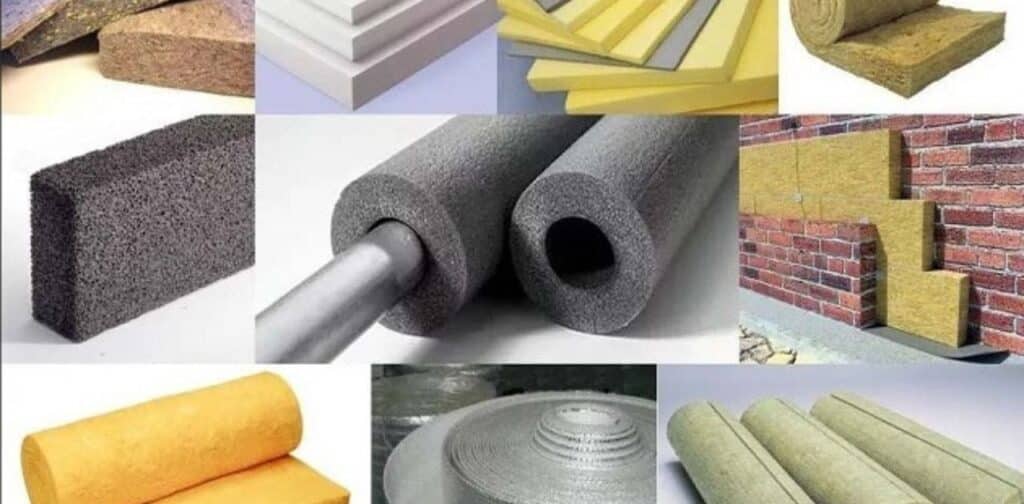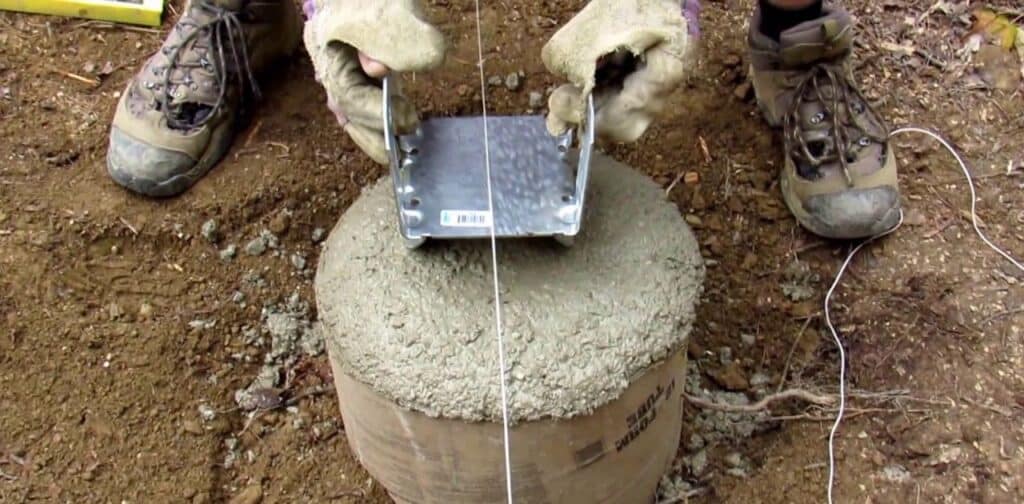Choosing the correct Sonotube size for a 6×6 post is crucial for ensuring the structural integrity and stability of your project. Whether you’re installing a deck, a fence or a concrete pillar, understanding the importance of Sonotube dimensions and their application can make or break the success of your construction.
In this comprehensive guide, we’ll explore everything you need to know about selecting the right Sonotube size, how to use it effectively, and the implications of your choices on the overall stability and safety of your structure.
Understanding Sonotubes
Sonotubes are cylindrical forms made from sturdy cardboard. They’re used to shape and support concrete as it sets. Builders often use them to create round columns, footings and posts. They’re lightweight, easy to use and provide a smooth finish.
What is a Sonotube?
A Sonotube, also known as a concrete form tube, is a cylindrical form made of cardboard or fiber material used to shape and support concrete as it cures. These tubes are primarily used in construction projects to create round columns pillars and footings for decks fences and other structures. Sonotubes are valued for their simplicity cost effectiveness and the clean smooth finish they provide to concrete columns.
Key Characteristics of Sonotubes:
- Material: Typically made from cardboard, coated with a water-resistant layer.
- Strength: Designed to withstand the pressure of wet concrete.
- Versatility: Available in various diameters and lengths to suit different projects.
Materials and Construction of Sonotubes

Sonotubes are constructed from high-strength, water-resistant cardboard, making them lightweight yet durable. The interior is often coated with a thin plastic or wax layer to prevent moisture from softening the cardboard during the curing process. This coating also facilitates the easy removal of the form after the concrete has set.
Advantages of Sonotubes:
- Ease of Use: Lightweight and easy to position, even on uneven terrain.
- Cost-Effective: Affordable alternative to custom-built forms.
- Environmentally Friendly: Often made from recycled materials and can be recycled after use.
Overview of Sonotube Sizes
Sonotubes come in various sizes to fit different project needs. They range from 6 inches to 36 inches in diameter with larger sizes used for heavy-duty structures. The diameter you choose depends on the load and stability required. Smaller sizes are great for light posts while larger ones handle bigger, more demanding projects.
Available Sonotube Sizes
Sonotubes come in a wide range of diameters, typically from 6 inches to 60 inches, and lengths that can be customized or extended by cutting. Choosing the right size depends on the specific requirements of your project, including the load-bearing needs and local building codes.
Common Sonotube Sizes:
- Small Projects: 6-inch to 12-inch diameter tubes for light structures like small fences or minor posts.
- Medium Projects: 12-inch to 18-inch diameter tubes suitable for deck posts, medium-sized footings, and fence post bases.
- Large Projects: 20-inch to 36-inch diameter tubes for significant load-bearing structures like concrete pillars and large footings.
Factors Influencing Sonotube Size Choice
Selecting the correct Sonotube size isn’t just about matching it to the post dimensions. You must also consider several other factors:
- Soil Type: Softer soils may require larger diameters to distribute the load more effectively.
- Load-Bearing Requirements: The weight the post must support dictates the size and depth of the footing.
- Local Building Codes: Regulations may specify minimum requirements for footing stability, which can influence your Sonotube diameter choice.
Comparison Table: Sonotube Sizes and Applications
| Sonotube Diameter | Application | Concrete Volume (per foot) |
| 6 inches | Small fence posts, garden structures | 0.20 cubic feet |
| 8 inches | Light deck posts, mailbox posts | 0.35 cubic feet |
| 12 inches | Medium deck posts, fence posts | 0.79 cubic feet |
| 18 inches | Large deck posts, pergolas | 1.77 cubic feet |
| 24 inches | Heavy-duty posts, small columns | 3.14 cubic feet |
| 36 inches | Large concrete pillars, significant footings | 7.07 cubic feet |
This table serves as a quick reference to help you match the Sonotube size with the specific needs of your project.
Selecting the Right Sonotube Size for a 6×6 Post
Choosing the right Sonotube size for a 6×6 post is essential for a strong foundation. Typically a 12 inch diameter Sonotube works well for most 6×6 posts, providing enough support and stability.

However, if your project involves heavy loads or soft soil, consider using an 18-inch diameter tube. Always check local building codes to ensure your footing meets safety standards.
Key Considerations
When selecting the appropriate Sonotube size for a 6×6 post, there are several crucial considerations:
- Load-Bearing Capacity: The Sonotube must be capable of supporting not only the 6×6 post but also the weight of the structure it’s holding up. This includes live loads (like people or furniture on a deck) and dead loads (the weight of the structure itself).
- Frost Line and Depth: In colder climates, you must account for the frost line—the depth to which the ground freezes. Placing the Sonotube below this line prevents frost heave, which can push the post out of the ground over time.
- Concrete Volume Calculation: To ensure the footing is strong enough, you need to calculate the required volume of concrete. For example, a 12-inch diameter Sonotube with a 4-foot depth will need approximately 3.14 cubic feet of concrete.
Recommended Sonotube Size for 6×6 Posts
For most standard 6×6 posts, particularly for deck post installations, a 12-inch diameter Sonotube is recommended. This size provides a sufficient footing base to support the post and distribute the load effectively. However, depending on the project’s specific requirements, such as the height of the deck or the type of soil, a larger diameter might be necessary.
Recommended Sizes:
- Standard 6×6 Deck Post: 12-inch Sonotube diameter.
- Heavy Load or Soft Soil: Consider an 18-inch Sonotube diameter to increase footing stability.
Read Also: Joe Burrow’s House: A Touchdown in Simplicity
Importance of Correct Sonotube Sizing for 6×6 Posts
Using the correct Sonotube size for a 6×6 post is crucial for safety and stability. If the tube is too small, the post might shift or sink over time. The right size ensures the post stays secure and the structure remains strong. Always follow building codes to avoid issues later.
Structural Integrity
Using the correct Sonotube size is critical for maintaining the structural integrity of your project. Undersized Sonotubes can lead to inadequate footing support, causing the post to shift, sink, or crack over time. This can result in costly repairs or even complete structural failure.
Common Issues with Incorrect Sizing:
- Shifting: The post may not be anchored deeply enough, leading to movement over time.
- Sinking: Insufficient footing size can cause the post to sink into the ground, especially under heavy loads.
- Cracking: Concrete can crack if the Sonotube is too small to handle the load, leading to weakened structural support.
Compliance with Building Codes
Building codes are designed to ensure safety and durability. They often specify minimum requirements for post footings, including the diameter and depth of Sonotubes. Failing to comply with these codes can result in legal issues, the need for rework, or even structural hazards.
Check Local Regulations:
- Always verify local building codes before starting your project.
- Ensure your Sonotube dimensions meet or exceed the minimum requirements for post foundation stability.
Cost Considerations
Choosing the wrong Sonotube size can also have financial implications. Undersized footings might require additional work down the line, such as reinforcing the structure or replacing posts. On the other hand, oversizing might lead to unnecessary material costs.
Budgeting Tips:
- Use a concrete volume calculator to avoid overbuying materials.
- Consult with a contractor if unsure about the appropriate Sonotube dimensions for your project.
Using Sonotubes for 6×6 Deck Posts

Placing Sonotubes for 6×6 deck posts ensures a solid foundation. Position the tube in a properly dug hole, then fill it with concrete. This process keeps the post stable and prevents shifting. It’s a simple, effective way to build a sturdy deck.
Step by Step Guide
Properly installing a 6×6 deck post using Sonotubes involves several critical steps. Here’s a step by step guide to help ensure your project is successful:
Preparing the Site
- Excavation: Dig a hole that is both wide and deep enough to accommodate the Sonotube and meet local code requirements. The hole should be at least twice the diameter of the Sonotube.
- Leveling: Ensure the bottom of the hole is level to provide a stable base for the Sonotube.
Placing the Sonotube
- Positioning: Place the Sonotube in the hole, making sure it is centered and vertical.
- Securing: Fill the bottom of the hole with gravel to prevent settling and ensure the Sonotube remains in place.
Pouring Concrete
- Mixing: Prepare the concrete mix according to the manufacturer’s instructions, ensuring it’s neither too wet nor too dry.
- Pouring: Carefully pour the concrete into the Sonotube, filling it to the top. Use a shovel or rod to remove air pockets that can weaken the structure.
- Curing: Allow the concrete to cure for at least 48 hours before proceeding with any additional construction.
Inserting the 6×6 Post
- Timing: Insert the 6×6 post into the wet concrete if the post is meant to be embedded. Ensure it is perfectly vertical using a level.
- Securing: Brace the post to hold it in place as the concrete sets.
Common Mistakes to Avoid
- Misalignment: Failing to align the Sonotube properly can lead to uneven or unstable posts.
- Incorrect Concrete Mix: Using the wrong concrete consistency can result in weak footings.
- Insufficient Curing Time: Not allowing the concrete to cure fully can compromise the strength of the footing.
Tips for Success
- Double-Check Measurements: Always measure twice before cutting or pouring to avoid costly mistakes.
- Use a Concrete Vibrator: This tool helps remove air pockets and ensures a denser, stronger footing.
- Cover Concrete: Protect the concrete from rain or extreme temperatures while it cures to prevent damage.
Practical Examples and Case Studies

Practical examples and case studies show how different Sonotube sizes are used in real projects. For instance, a homeowner in sandy soil used an 18-inch Sonotube for a stable deck foundation. In colder climates, a 12-inch Sonotube was chosen to prevent frost heave in fence posts. These examples highlight the importance of matching Sonotube size to project conditions.
Real-World Scenarios
Case Study 1: Deck Construction in Sandy Soil A homeowner in Florida needed to install a deck using 6×6 posts. Due to the sandy soil, a larger 18-inch Sonotube was chosen to provide additional stability. The project was a success, with the deck remaining stable and level despite the loose soil conditions.
Case Study 2: Fence Post Installation in a Cold Climate In Minnesota, a contractor used 12-inch Sonotubes for fence post bases, ensuring the footings extended below the frost line. This prevented frost heave and kept the fence posts secure through multiple freeze-thaw cycles.
Lessons Learned
- Adapt Sonotube Size to Soil Conditions: Sandy or loose soils may require larger Sonotubes to prevent shifting.
- Always Consider the Frost Line: In colder climates, extending the Sonotube below the frost line is essential for preventing post movement.
Conclusion
Selecting the right Sonotube size for a 6×6 post is crucial for a stable and durable foundation. Generally, a 12-inch diameter Sonotube works well for standard deck posts, providing sufficient support.
For projects with heavier loads or in softer soil, consider using a larger 18-inch Sonotube to ensure better stability. This extra size helps distribute the weight more effectively.
Always follow local building codes and project requirements when choosing your Sonotube size. Proper selection will prevent future issues and ensure the long-term success of your structure.

Ashi is the site admin for “techitrusts.com” and specializes in writing within the journal category. If you need more detailed information about his background or work, feel free to ask!